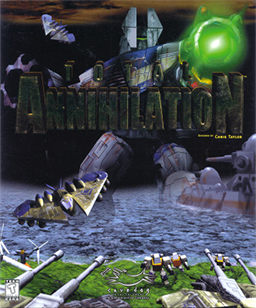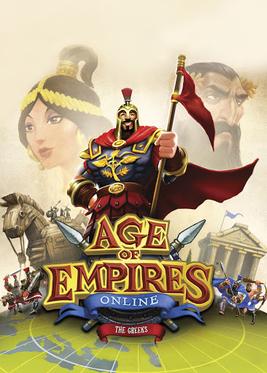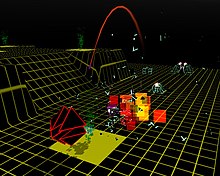
Freeciv is a single- and multiplayer turn-based strategy game for workstations and personal computers inspired by the proprietary Sid Meier's Civilization series. It is available for most desktop computer operating systems and available in an online browser version. Released under the GNU GPL-2.0-or-later, Freeciv is free and open-source software. The game's default settings are closest to Civilization II, in both gameplay and graphics, including the units and the isometric grid. However, with a lot of multiplayer games being played in longturn communities, rulesets and additional variants have evolved away from the original ruleset. Freeciv is playable online at Longturn.net, fciv.net, freecivweb.org and some temporary private servers.

Quake II is a 1997 first-person shooter video game developed by id Software and published by Activision. It is the second installment of the Quake series, following Quake. The game's storyline is continued in its expansions, including one tying in Quake II and the first game, and Quake 4.
Real-time strategy (RTS) is a subgenre of strategy video games that does not progress incrementally in turns, but allow all players to play simultaneously, in "real time". By contrast, in turn-based strategy (TBS) games, players take turns to play. The term "real-time strategy" was coined by Brett Sperry to market Dune II in the early 1990s.

Total Annihilation is a real-time strategy video game created by Cavedog Entertainment, a sub-division of Humongous Entertainment, and was released in September 1997 by GT Interactive for Microsoft Windows and Mac OS. Two expansion packs were released, The Core Contingency on April 29, 1998 and Battle Tactics on July 20. After the closure of the Cavedog Entertainment in 1999, the intellectual property fell to Infogrames.
A source port is a software project based on the source code of a game engine that allows the game to be played on operating systems or computing platforms with which the game was not originally compatible.

Blood is a 3D first-person shooter video game developed by Monolith Productions and published by GT Interactive and developed using Ken Silverman’s Build engine. The shareware version was released for MS-DOS on March 7, 1997, while the full version was later released on May 21 in North America, and June 20 in Europe.

The Battle for Wesnoth is a free and open-source turn-based strategy video game with a high fantasy setting, designed by Australian-American developer David White and first released in June 2003. In Wesnoth, the player controls a particular faction/race and attempts to build a powerful army by controlling villages and defeating enemies for experience. The game is loosely based on the Sega Genesis games Master of Monsters and Warsong.

Empires: Dawn of the Modern World is a 2003 real-time strategy video game developed by Stainless Steel Studios and published by Activision. Set in a world-historical period that extends from the Middle Ages to World War II, the game tasks players with guiding one of nine rival great civilizations to victory. Customer surveys from Stainless Steel's previous game, Empire Earth, were used as a starting point for Empires: these inspired the team to take a more minimalist design approach, and to include civilizations without overlapping styles of play. Empires was positively received by critics, who enjoyed its multiplayer component. However, certain reviewers disliked its single-player mode, and opinion clashed on the game's level of uniqueness compared to competitors such as Rise of Nations. The sales of Empires, when combined with those of Empire Earth, totaled 2.5 million units by 2004.

0 A.D. is a free and open-source real-time strategy video game under development by Wildfire Games. It is a historical war and economy game focusing on the years between 500 BC and 1 BC, with the years between 1 AD and 500 AD planned to be developed in the future. The game is cross-platform, playable on Windows, macOS, Linux, FreeBSD, and OpenBSD. It is composed entirely of free software and free media, using the GNU GPLv2 license for the game engine source code, and the CC BY-SA license for the game art and music.
Cube 2: Sauerbraten is a first-person shooter released for Microsoft Windows, Linux, FreeBSD, OpenBSD, and Mac OS X using OpenGL and SDL.

Alien Arena is an open-source, stand-alone first-person shooter video game. Begun by COR Entertainment in 2004, the game combines a 1950s-era sci-fi atmosphere with gameplay similar to the Quake, Doom, and Unreal Tournament series. Alien Arena focuses mainly on online multiplayer action, although it does contain single-player matches against bots.

Glest is a free and open-source real-time strategy computer game from 2004. Glest is set in a medieval fantasy world with two factions, and was compared with Warcraft III and the Empire Earth series. The game received positive to mixed reviews from the press, has been downloaded over two million times, and spawned several derivative continuation projects which are under active development.

Total Annihilation: Battle Tactics is the second expansion pack for the real-time strategy video game Total Annihilation, released on June 30, 1998 in the United States. Its features include 100 new missions as either the Arm or the Core, four new units and new keyboard shortcuts. Six new multiplayer maps are included, and, for the first time in the Total Annihilation series, some single-player missions are set on acid and crystal worlds.

SuperTuxKart (STK) is a free and open-source kart racing game, distributed under the terms of the GNU General Public License, version 3. It features mascots of various open-source projects. SuperTuxKart is cross-platform, running on Linux, macOS, Windows, iOS (beta), Android systems and Nintendo Switch (homebrew).

Sid Meier's Civilization V is a 4X video game in the Civilization series developed by Firaxis Games. The game was released on Microsoft Windows on September 21, 2010, on OS X on November 23, 2010, and on Linux on June 10, 2014.

Bos Wars is an open source, cross-platform real-time strategy video game. The game's engine is based on the open-source Stratagus engine, and is set in the future. The game allows the player to develop a war economy, managing energy and magma as resources, in order to build an army to combat their enemies.

Age of Empires Online is a multiplayer online real-time strategy game developed by Robot Entertainment and Gas Powered Games that was released on August 16, 2011. Based upon the gameplay of the Age of Empires series, it was originally developed by Robot Entertainment, but on February 24, 2011, Gas Powered Games, took over production. The game was published by Microsoft.

Zero-K is a free multi-platform open source real-time strategy video game. Initially based on content from Total Annihilation on the open source Spring Engine, it was forked and all proprietary content replaced, and evolved into a completely new game with unique features. Among the games powered by the Spring Engine, Zero-K makes extensive use of Lua scripting for interface and gameplay changes/enhancements, as well as unique real-time strategy concepts such as a flat technology tree.

MegaGlest is a free and open source real-time strategy computer game in a fantasy world, mixing elements of re-imagined past civilizations, magic and steampunk. It is an actively developed fork of the 2004 game Glest, which is no longer under development.

Planetary Annihilation is a real-time strategy PC game originally developed by Uber Entertainment, whose staff included several video game industry veterans who worked on Total Annihilation and Supreme Commander. The game was released in 2014, and the stand-alone expansion Planetary Annihilation: Titans was released in 2015.


















